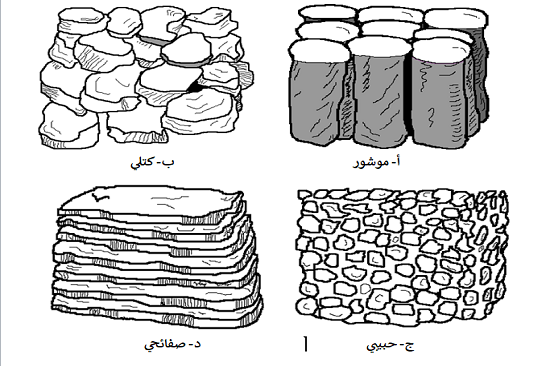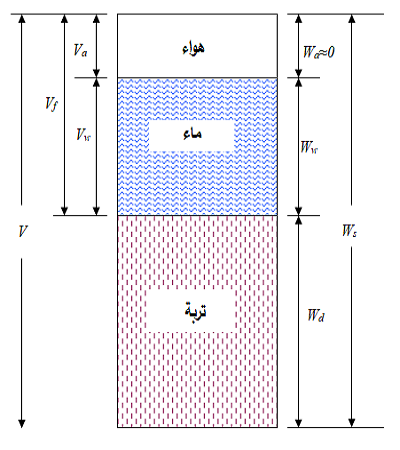| News Details |
The relationship of water to soil
2024-02-19

Assistant Lecturer Saleh Mahmoud Saleh
Upper Euphrates Basin Developing Centre / University of Anbar
Water is present in the soil and occupies its empty inter pores, and water affects the characteristics of the natural agricultural soil and its aerated state, which in turn affects the growth and productivity of the plant.
As for agricultural soil, it means the surface layer of the earth's crust suitable for plant growth, provided that it is characterized by the following:
1- Their thickness is enough to cover the roots.
2- It is not too firm to facilitate its service and the movement of water and air in it.
3- It has the ability to retain the moisture necessary to meet the water needs of plants.
In addition to the methods of its consumption, those related to the capacity of water conservation, especially in the root area, as well as leaching and the amount of water consumed by the plant, knowledge and practical experience in the field of soil, water and plant relationships help to develop good designs for irrigation and cultivation of crops suitable for the soil.
Natural properties of soil:
When planning any irrigation system, the engineer or agronomist should be familiar with the physical (physical) characteristics of the agricultural soil that affect the movement and retention of water. The following are the most important soil characteristics related to irrigated agriculture:
A- Soil texture:
It is the percentage of sand, silt and clay in the soil, that is, it expresses the proportions of the presence of all components of the soil grains. It is a scientific term that reflects the roughness or softness of the soil grains as a whole and gives a clear picture of the type of soil. The percentages of soil composition are determined from the results of the mechanical analysis of the soil in the laboratory.
Clay lands are commonly called "fine textures", sandy lands are "coarse", and lands with similar clay, silt and sand are "medium textured or mixed". This division does not reflect soil fertility, production capacity or salinity, but soil texture affects the soil's water retention capacity and air movement to and from the soil.
B- Soil structure:
It is the system of arranging primary soil grains in certain building units called aggregates (Figure 1). The structure affects the following soil characteristics, which in turn affect the growth and productivity of plants:
1- The movement of soil water and its effect on soil infiltration and permeability.
2- Soil air movement.
3- Soil temperature.
A. Prismatic
B. Blocky
C. Granular
D. Platy

Different forms of soil construction
C. Particle density Ps:
It is defined as the mass or weight of the unit volume of the solid parts of the soil, and the volume of the interstitial spaces is excluded from the calculation, that is, the sample volume is the volume of the solid only, and it is expressed (g/cm3).
The particle density of soils is between 2.6 and 2.75g/cm3, and the value varies according to the type of minerals present in them. In general, the presence of organic matter in the soil reduces its particle density.
D. Bulk density As:
It is defined as the mass or weight of the unit size of the soil sample in its natural state, including voids, and its value varies according to the texture and structure of the soil. They are also particularly important in determining different moisture treatments and irrigation requirements, and the bulk density values for clayey and silty soils range between 1 and 1.6 g/cm3, and for sandy soils between 1.2 and 1.8 g/cm3.
E. Soil porosity n:
It is the percentage of the size of the spaces between the soil particles, ranging between 35 and 55% for agricultural soils. The porosity of sandy soils is usually lower than that of clayey soils.
F. Soil permeability k:
Permeability is an important soil characteristic that shows the speed of water movement through the soil interstitial spaces as a result of the forces of gravity. Permeability is influenced by soil texture and structure and many other factors.
Soil moisture treatments:
a) Field capacity: represents the moisture content of the soil at the maximum amount of moisture that the soil can retain after it disposes of the free water surplus due to gravity. The water is then held by a tensile force of 0.1–3.0 bar. Agricultural soils usually reach their field capacity after a period of time estimated at 2-4 days after water is added to them, depending on the type of soil. The importance of field capacity lies in the fact that it represents the upper limit of available water for plants.
b) Wilting point: It represents the moisture content of the soil at which plants begin to wilt, and there are two types of wilting point: - Permanent wilting.
- Temporary wilting.
a) Total available water: It is the amount of moisture water retained by the soil between the field capacity and the wilting point, and the plant benefits from a large part of this water (Figure 4).
Total Available Water = Field Capacity – Wilting Point
b) Available water: It is the amount of water in the soil that the plant can deplete without effort, and is equal to:
Available water = total available water × depletion ratio (EA).
Note: The depletion rate is between 35 and 75%.
c) Gravimetric water: Represents the amount of water that exceeds the field capacity and percolates deep into the soil outside the root zone due to gravity.
Moisture content of soil:
a) Dry Moisture Content Weight (PWD):
b) Wet Moisture Weight Content (Pww):
c) Volumetric moisture content:
d)
Whereas:
Ww = Water weight in soil sample
Wd = weight of soil sample after drying.
Ws= weight of soil sample before drying.
Vw = volume of water in the soil sample.
V = total soil sample volume, including water and air.
Figure (2) can be used to identify all the terms:










